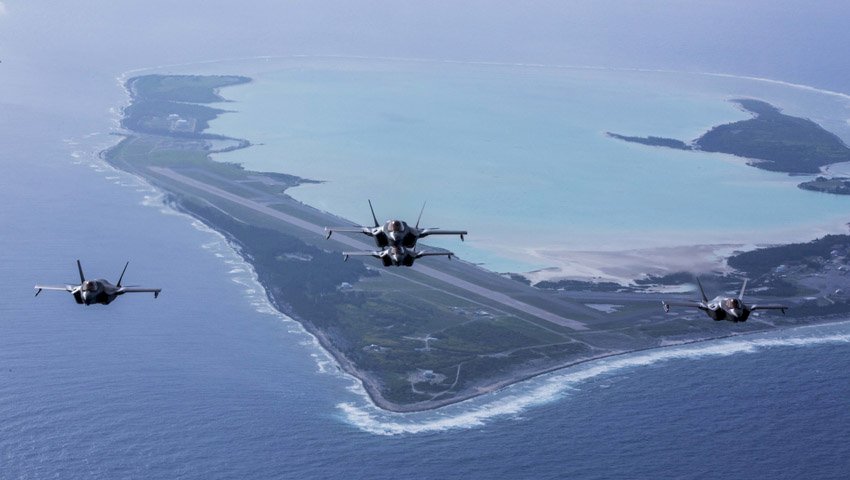
One of the most isolated US Air Force bases is to receive a US$87 million upgrade courtesy of the US Air Force Civil Engineer Centre (AFCEC), writes Steve Kuper.
The outpost, known as Wake Island Airfield, holds great significance because it serves as a trans-Pacific refuelling depot for military missions in addition to being a military training and missile testing location, this 6.5-square-kilometre coral atoll, made of three islets, is considered the air bridge for Air Force aircraft flying across the Pacific Ocean because of its unique location and the 2,987-metre runway.
It’s the runway that is of central importance. The island and airfield enables the Air Force to conduct their mission, and in case of emergency, allows military aircraft to be diverted to land there safely. As the longest in the Pacific islands, the runway has deteriorated after many years of use.
US Air Force Colonel David Norton, director of AFCEC’s Facility Engineering Directorate, said, “Timely infrastructure is critical to mission assurance. We are proud of our contributions to construct mission-ready and power projecting platforms that enable commanders increased readiness and lethality.”
Wake Island is a US territory, and has been named a National Historic Landmark due to the World War II battle that took place at the atoll in 1941. On 8 December 1941, it was attacked by the Japanese, who, after a hard fought battle with US Forces assigned to the island, took possession two weeks later. It was surrendered by the Japanese on 4 September 1945 – the US Air Force took control of the island in 1973.
Located halfway between Hawaii and Japan, the atoll handles between 500 and 600 aircraft annually and needs improved infrastructure to fully support the Air Force mission. The installation is operated by the Pacific Air Forces Regional Support Center located at Joint Base Elmendorf-Richardson, Alaska.
Partnering with the 611th Civil Engineer Squadron at JB Elmendorf-Richardson, AFCEC is engaged in multiple projects to modernise the airfield infrastructure and supporting facilities on the island.
“AFCEC is a key player in ensuring infrastructure for the Air Force to enable mission capability and success for the warfighter. Our team of experts is committed to restore full capability to the airfield and facilities to ensure the island remains a vital strategic link in the Pacific region,” Col Norton explained.
AFCEC’s Facility Engineering Directorate awarded the construction contract in February 2019. This effort, executed by AECOM, a California-headquartered contractor, will modernise the airfield infrastructure by repairing and expanding Taxiway Bravo and the Hot Cargo Pad.
AFCEC delivered the design for this construction and is responsible for overall management of the project. After the pre-construction phase, construction began in March 2020 and is slated for completion by spring 2021.
Captain David Leonard, AFCEC’s project manager, added, “The remote location of the Wake atoll required extensive logistics planning to ship construction equipment, material, parts and supplies, which we successfully accomplished in November 2019. The existing paving was in poor condition and needed upgrades to meet Air Force standards for aircraft parking, the repair will include aircraft hardstands for fighter and heavy aircraft.”
The effort also includes repair of two drain pipes in the existing drainage basin that run under the aprons and taxiway. They will be replaced with 24-inch reinforced concrete piping. Construction is also underway for the existing airfield Hot Cargo Pad – a high security zone used for loading and unloading ammunition, explosives and other hazardous material.
Ultimately, the infrastructure will accommodate C-17 Globemaster III operations, which is the Air Force’s most flexible cargo aircraft capable of rapid, strategic delivery of troops and all types of cargo. Upon completion of construction, the modernised airfield will receive new lighting, grounding and pavement markings to support mission readiness and global air mobility.












